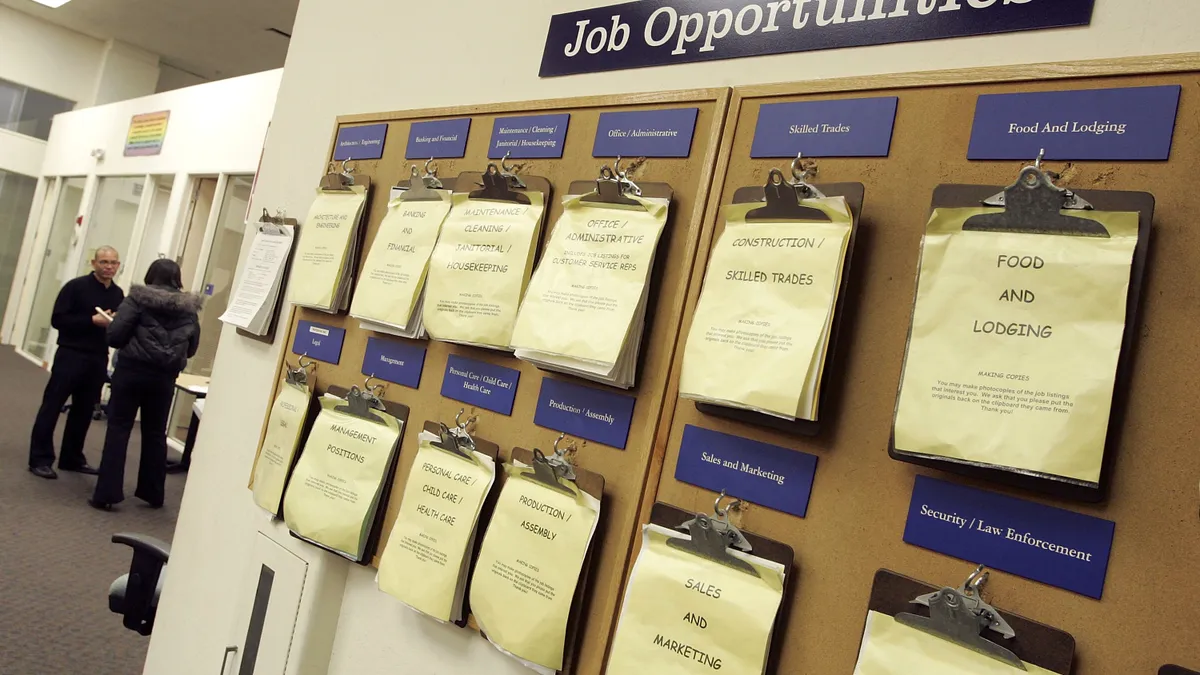Talent practitioners should make their organization's mission their North Star, allowing it to frame and guide talent acquisition strategy, according to Kyle Lagunas, head of talent attraction, sourcing and insight at General Motors.
Lagunas offered that advice and more during a keynote speech last month at the HR Tech Virtual conference, also encouraging attendees to challenge the idea of overwhelm as an operational norm.
1. Step back and reassess
When Lagunas joined GM a year ago, he inherited an extensive to-do list. Receiving more than a million applications each year, the company's talent operations had been deluged for some time — "overburdened, under-resourced and stuck chasing business-as-usual KPIs."
GM had been in "survival mode for the last few years, constantly adjusting," Lagunas said. This resulted in a reactionary recruiting operation, where, he said, the only goal was to "hire someone." The team had overengineered the process, and underoptimized important touch points in the lifeline of a requisition, he said. And the ATS was configured largely for an "imagined best practice" — not for performance.
He said talent acquisition, or maybe HR more broadly, is where a company's aspirations and its realities meet, but this combination of struggles made it difficult for his team to drive value.
2. Work in alignment with a North Star
In a situation like this, Lagunas said, the answer "isn't necessarily to run out and buy a bunch of tools." The answer is in specific initiatives, "[rooted] in something that already exists in the business."
At GM, for example, where the sustainability vision is "zero emissions, zero crashes and zero congestion," Lagunas proposed a zero emissions talent pipeline. It means "zero waste, highly efficient, super modernized, future-proof," he said, and the response was the lightbulb effect.
Lagunas encouraged talent practitioners to make the organizational mission their North Star, and follow it — actually allow it to frame and guide the talent acquisition program. "In order to be more proactive, we have to align to our business needs – near-term and [in the] future." He suggested talent pros ask themselves: "What needs to [be] done? Based on head count forecasts and current resources, what can we commit to? Start with aligning."
3. Garner buy-in
Professionals in the field can advance their goals by offering solutions for IT, purchasing, legal and other stakeholders across their organizations, Lagunas said. "In TA, you're not just solving for the person right in front of you," he said. Success can depend heavily on "champions who get it," and who will partner for better organizational transformation.
That means constantly encouraging people to think differently, he said, and challenging the status quo. "That's part of the gig, right? The market education is never done — constantly evangelizing and educating [stakeholders] on what exactly is the work we'll do together, building rapport and [understanding] that we win together."
Lagunas said he doesn't want blind trust in his leadership; he wants to inspire trust. "I want to execute so that I can earn trust," he said, "so those who extended trust know they were right to do it."
4. Create a world-class candidate experience
Talent pros can set their companies apart through candidate experience by applying principles of inclusion, and by engaging talent more intentionally and continuously. "Every single person who raises their hand and says they're interested, take that," Lagunas recommended, and "do something with it. Get job seekers excited about applying, then move quickly and efficiently. Create a world-class experience for each one. Make sure that no one slips through the cracks."
By nurturing candidates across their journey — from events and in-person conversations to universities, trade schools and even high schools, he said — it's possible to attract and acquire talent before the business is in need. But, he said, employers must be ready to invest time, energy and money to upskilling people.
And be conscious of change, he said. Lagunas said it's important to "[k]now what best fit talent looks like. We're not just hiring more people, personas and backgrounds. We're hiring wholly new kinds of talent [for] critical skills and capabilities… in key demographics and new regions where the business may want to operate."
Take that North Star, he said, and use it to "grow the employer brand beyond its backyard. Make the world know who you are as an employer."
5. Embrace change
Talent pros must embrace change as a constant, Lagunas said. "As a transformational leader, you have to be the strong foundation. You have to be that smiling face, that positive and encouraging energy."
Still, find time to think, he said: "It's super important that you have head space to think, to process, to unwind."
And finally, recognize that change is a worthy goal, too. Lagunas shared unique hopes for his team at GM, striking in their selflessness: that they "all get poached [for] awesome new jobs paying 20% more," and that their work together "will be the swan song that jettisons them into another career."




















